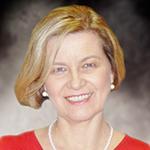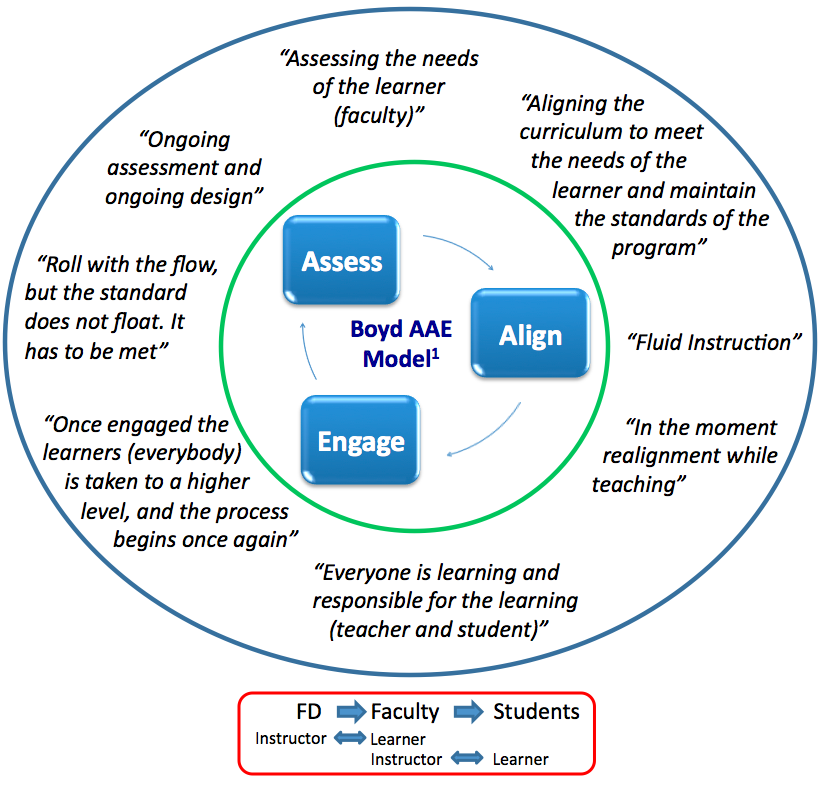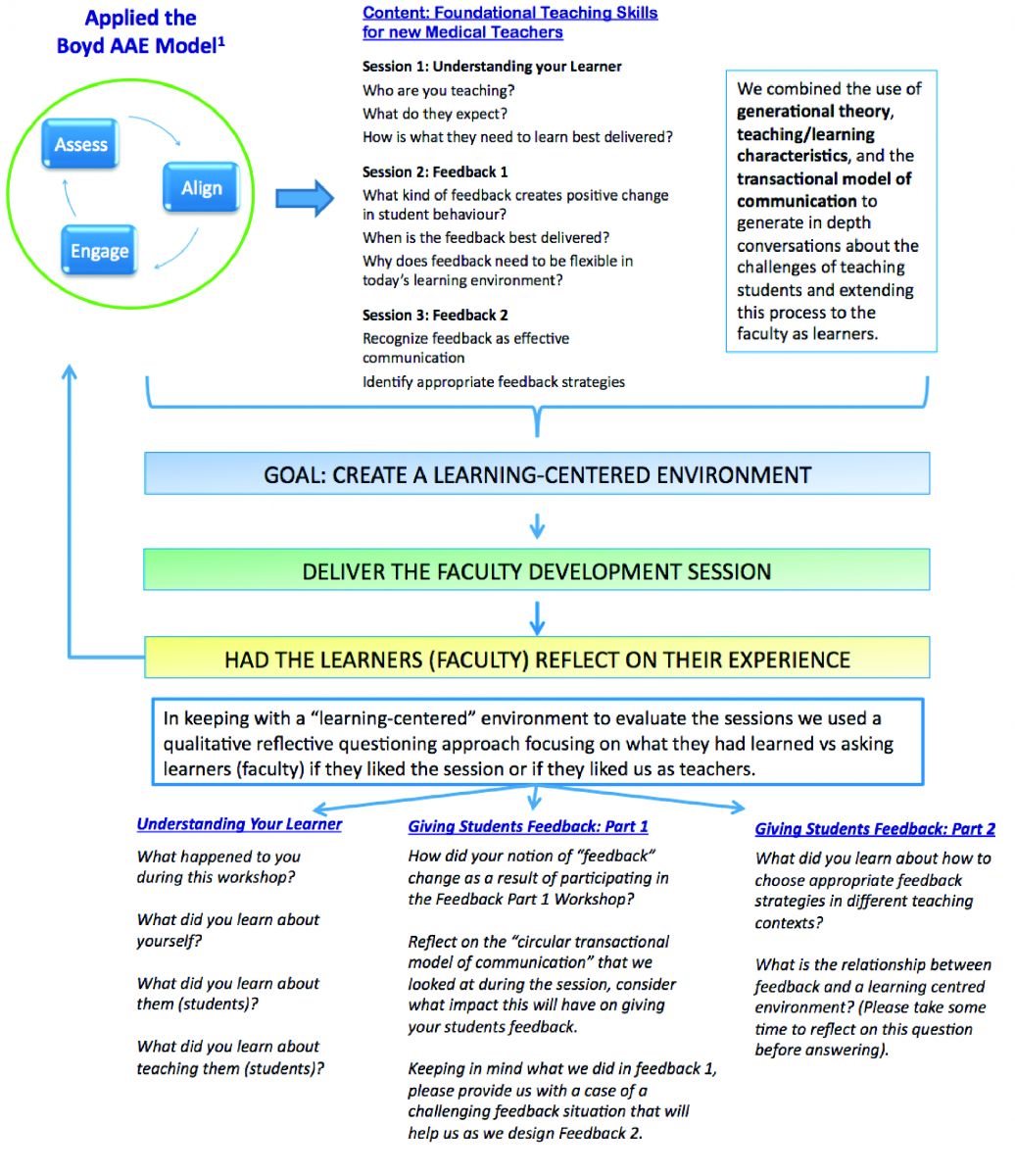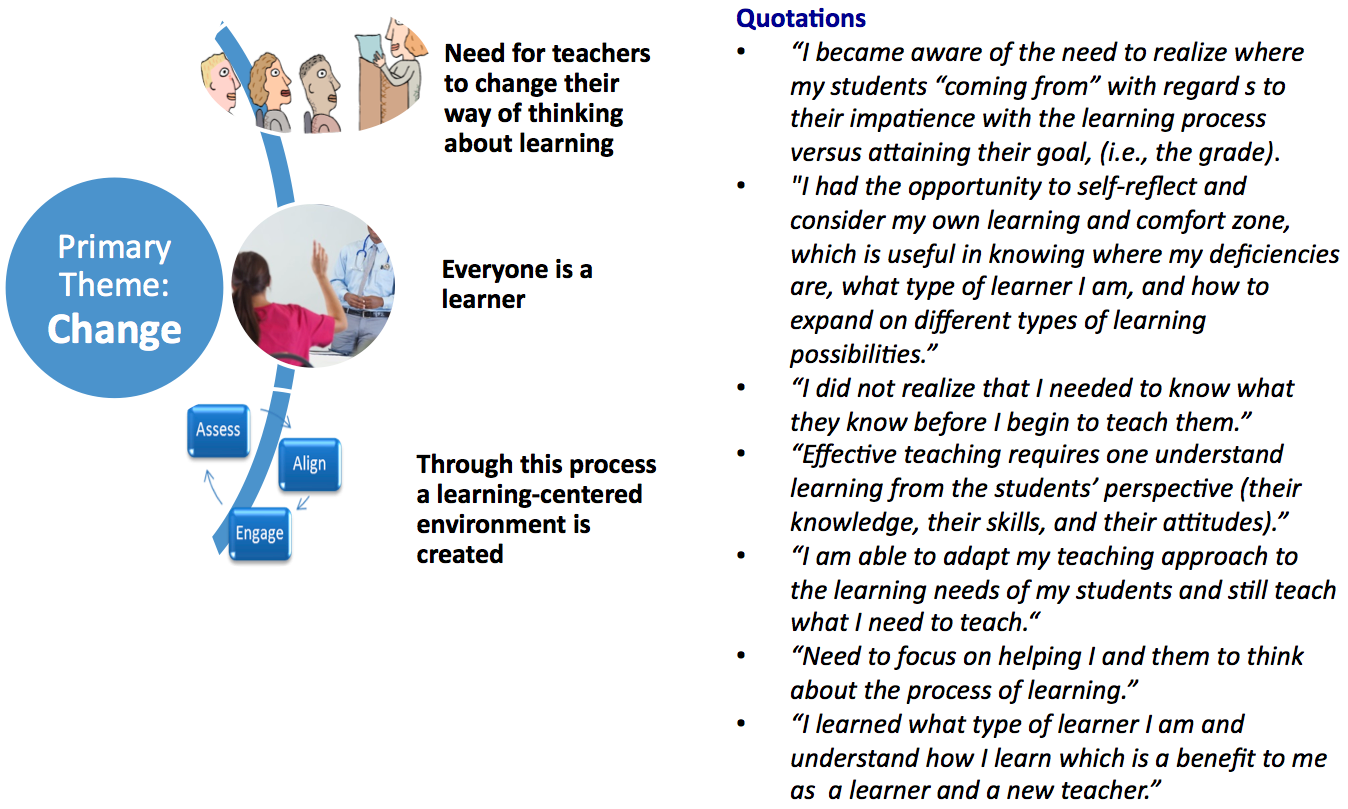


Theme
3JJ Staff development
INSTITUTION
Faculty of Medicine, University of Toronto, Toronto, Ontario, Canada
Trillium Health Partners, Mississauga, Ontario, Canada


Our challenge was to set the stage for new teachers to be effective in a new expansion campus of an established medical school at the University of Toronto.
We used the Boyd AAE Model1 that was originally design to create a learning-centered environment for students and faculty in an Arts and Science environment. It involves assessing the students and using this data to align the curriculum to maintain the standards but also to engage the students. For the context of faculty development in medicine, we continually assessed the learners (i.e., the faculty), and aligned our instruction to meet the learners’ needs and assessed their learning through reflective mechanisms.
The model and the approach that we used to design and deliver the faculty development is illustrated in figure 1.
Figure 1: Faculty Development in a Learning-Centered Environment (click to view larger image)

1. Cleo Boyd, Keynote Address, Best Practices Conference, Erindale College, University of Toronto. For further information contact Cleo Boyd at cleo.boyd@utoronto.
- The diversity of teachers and students is changing dramatically as are the needs of the medical curriculum.
- To prepare new teachers effectively for this teaching environment, we need to adapt our approach to faculty development.
- We need to move from a learner-centered approach to a learning-centered approach to preparing out teachers and our students.
- To achieve this, we need a fluid, ongoing approach that is assessment driven and responsive in the moment to the needs of the learner.
- This requires an enhanced and innovative approach to teaching the teacher.
- We propose you have to assess who your audience is, what they know and feel and then align what is taught so they (learners) can engage with the learning and then begin the process all over again.
Old ways or even current ways of thinking about learning have to be challenged constantly if we are to meet the challenge of medical education in the 21 century.
We designed a new approach to engaging new teachers by applying a process that we development for Faculty Development Design that is based on the framework called Boyd AAE Model or “Assess, Align, and Engage ”1 Model, which was developed for student instruction which reflects a "learning-centered" environment. (see figure 2)
The content that we applied this process was “Understanding your Learner” and “Giving Students Feedback: Part 1 and 2”.
To create alignment between the needs of the teacher and the learners they need to engage in the learning process. Therefore, we combined the use of generational theory, teaching/learning characteristics, and the transactional model of communication to generate in depth conversations about the challenges of teaching students and extending this process to the faculty as learners.
Figure 2: Our Approach (Click to view larger image)


Over a 3 year period we offered this workshop series four times for a total of twelve sessions that have been attended by 78 faculty to-date.
We encouraged faculty to take these three sessions in order.
Some faculty just started teaching while other had some experience.

Participants’ responses to the reflective questions following each session were analysed thematically and a number of themes emerged.
The central theme was the “Need for teachers to change their ways of thinking about learning”, specifically that everyone is a learner, thus a learning-centered environment is created.

New pedagogies are created when we understand that learner-centered and learning-centered environments are not the same concept. Learning-centered teaching and learning requires a collaborative environment in which faculty and students are constantly learning and teaching each other.
- Cleo Boyd, Keynote Address, Best Practices Conference, Erindale College, University of Toronto. For further information contact Prof. Cleo Boyd at cleo.boyd@utoronto.ca
Note: This project has been exempt from Research Ethics Review at the University of Toronto and any conclusions or learnings were not gained through research (for wide external application) but through a QI/QA project carried out in the local context.
 Send Email
Send Email